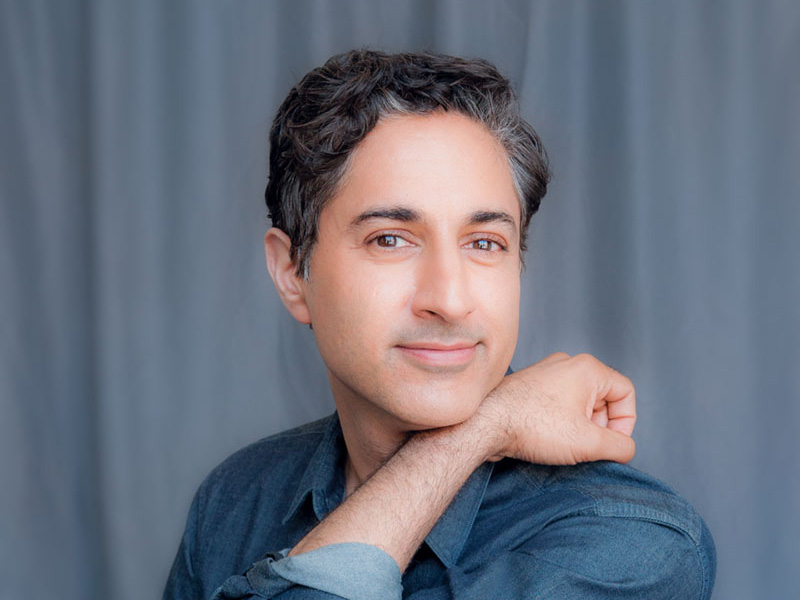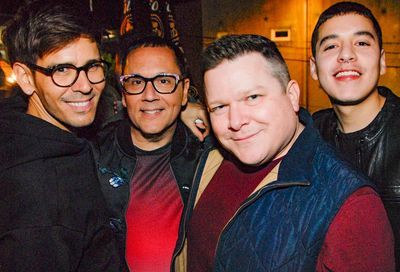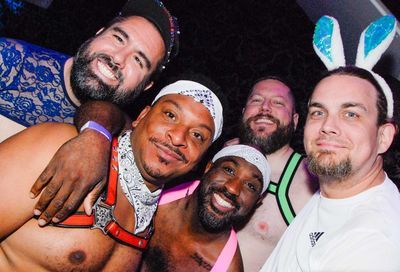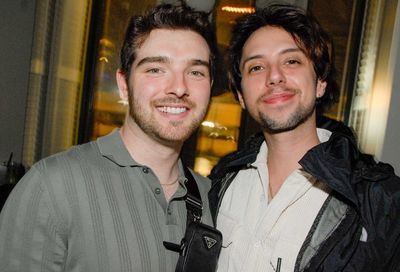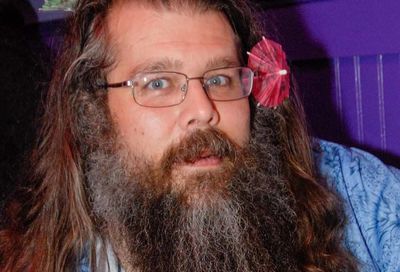Reform School: Piper Kerman
''Orange is the New Black'' author Piper Kerman is on a mission to help improve conditions in prisons

Photo by Brian Bowen Smith for Netflix
MW: Obviously the argument, as stated in the show repeatedly, is “Well, but they’re criminals, they’re prisoners. They’ve lost their rights.” So how do we change a system that is so deeply rooted in the psyche of not giving a damn?
KERMAN: The most important thing is to make sure that fewer Americans go into that system. Disproportionately for poor people of color, mental health issues or substance abuse issues get criminalized, and people who should really go into treatment or get medical care instead get put in prisons and jails. And so the three biggest providers of mental health care in this country are the Cook County Jail, the Los Angeles County Jail, and Riker’s Island. And everyone seems to agree that’s not a good choice, that’s a mistake, but it takes public will to make sure that instead of sending really low level offenders into the courts and into prisons and jails that they get the help they need to not be addicted to drugs or to get help with the mental illness that plagues them.
When we think about LGBTQ folks, there’s substance abuse concerns, there’s mental illness concerns and some really fundamental issues for youths around things such as homelessness and what are viewed by law enforcement as public disorder issues. Again, we disproportionately send these young people into the system when they don’t belong there.
MW: The transgender community in particular is targeted.
KERMAN: Heavily targeted. Hopefully, we’re going to see some changes on that based on an increased understanding and recognition of the humanity of those folks, which I think has been a problem when you talk about law enforcement.
MW: Do you feel you deserved to go to prison?
KERMAN: I don’t dispute my sentence, especially when I found myself next to other women who had very comparable offenses and yet were serving sentences of five years, seven years, ten years compared to my one year. I come back to that question of inequality and the fact that different Americans will be policed differently, different Americans will be censured differently, and they’ll be treated differently sometimes if they’re behind bars. And so I’m always very mindful of the fact that the criminal justice system targets some members of our society in a way that middle class white folks don’t necessarily have to bear.
MW: The level of conflict on the show seems quite high at times. Is that similar to what you experienced?
KERMAN: There is definitely conflict, because prison is, by design, a place of scarcity. And any time you have scarcity, you’re going to have conflict. In the women’s prison, though, it’s very unlikely that you’re going to see a ton of violence. Women are unlikely to be locked up for violent crimes. They’re unlikely to commit them. And it’s my own experience that women rarely use violence behind bars to get what they want.
MW: Race is also a huge factor on the show, particularly when it comes to generating conflict.
KERMAN: Race is a really strong organizing principle when people first arrive. You find where you fit in the social ecology of the place over time, and that may be a lot less defined by your race than by other things, like how you want to spend your time or who you’re interested in being around. So my own personal experience is that over time, race is a much less dominant factor in terms of how you live your life behind bars. It’s a really big defining factor when folks first arrive, though. It’s like the sorting hat in Harry Potter. [Laughs.]
MW: There are two different types of lesbian activities on the show. There’s lesbian activity where the character is very clearly gay, and then there are other women who might not necessarily be lesbians but engage in it because there isn’t much else on offer. And then there are those who abstain altogether.
KERMAN: Human beings are sexual creatures and that’s true whether you put them in a cage or not. And just because you send someone to prison for ten years doesn’t mean that they are then neutered. What is amazing about the show, what thrills me but doesn’t surprise me is Jenji Kohan’s creative choices. She chooses to put on display a huge spectrum of human sexuality. I think that’s an accurate reflection of the world. One of the reasons so many people have responded to the show is because it reflects what we know and what we experience, even if we’re not locked up in prison. If you’re behind the walls of a women’s prison, you will turn into a stereotype of human sexuality.
MW: There was a genuinely horrifying moment in Season 2 where an elderly prisoner with dementia was cut loose — compassionate release, they called it. Basically, she’s put on the streets, homeless to fend for herself. The whole theme of aging and illness they dealt with this year was illuminating and startling.
KERMAN: Aging in prison is a huge issue in this country. Thirty years ago we began a process of mass incarceration and began sending millions more people to prison and jail than we ever used to do. And one of the other things we started doing in the last thirty years is to send people to prison for much longer sentences. And so what that has created behind the walls of every prison system, whether you’re talking about the Federal government or whether you’re talking about the state systems, is prisoners aging. Correctional systems are really trying to cope with all of the issues that come along with having very elderly people in prison who, frankly, obviously are not a public safety threat in any stretch of the imagination. On moral and human rights levels you know, it is incumbent for departments of correction or the Bureau of Prisons to provide care for those elderly people and they all know that elderly people tend to have a lot more medical concerns than others.
It’s a very serious problem in this country. It’s really important for us to really reconsider questions of compassionate release, and how those things are handled and what kind of care is being deliveredow””How
while people are incarcerated and whether it really makes sense to send people to prison for incredibly long sentences in the first place, whether that serves any public safety benefit.
MW: The same with the storyline of the woman with cancer this year and how alarming it is when they say “Well, this operation could actually save your life but it’s not in our budget. We’re not going to do it.”
KERMAN: That’s completely realistic.
MW: Not everyone in prison can be redeemed but if you can’t even show compassion where it’s needed, it sends a horrible message.
KERMAN: I couldn’t agree more.
MW: How do we educate an American populace that more than likely does not care, which takes the out of sight, out of mind approach?
KERMAN: When we remind people that each and every person in jail is a human being and is not simply their worst day or their worst act, but is a more complex person and is a person often who has folks on the outside who depend on them and love them, we’re more inclined to think about whether we’re using the criminal justice system the way that we expect it to be used, whether putting people in prison provides public safety or not. Because a huge percentage of people in prison are there for non-violent offenses. I am all for accountability when someone breaks the law, but whenever it’s possible we should hold people accountable in the community rather than marginalize them by a prison sentence, because it’s really hard to come back from a prison sentence.
What is so thrilling to me about the show is that it illuminates the humanity of every single one of those characters who are there for a variety of reasons. Some of them are there for reasons that seem ludicrous, and some of them have committed serious crimes.
So when people watch the show, or when people think about whether it’s a fictional story or whether it’s a true story, there is a recognition that about half of the people in prison are there for non-violent offenses, not for the things that necessarily makes the evening news, which are often horrifying at times, but a huge percentage of people in prison or jail are there for non-violent offenses and that the construct of the prison or jail sentence is not necessarily having the rehabilitative effects that maybe people expect it to have. Hopefully the show makes people think about these things differently.
For more information on prison reform or the book Orange is the New Black, visit PiperKerman.com.
https://www.youtube.com/watch?v=nryWkAaWjKg
https://www.youtube.com/watch?v=EcqcCSFT3uU
More interviews from “Orange Is the New Black” by Metro Weekly:
- Danielle Brooks and Samira Wiley (“Tasha ‘Taystee’ Jefferson” & “Poussey Washington”)
- Kate Mulgrew and Lorraine Toussant (“Galina ‘Red’ Reznikov” & “Yvonne ‘Vee’ Parker”)
- Laura Prepon & Jason Biggs (“Alex Vause” & “Larry Bloom”)
- Laverne Cox (“Sophia Burset”)
- Selenis Leyva (“Gloria Mendoza”)
- Yael Stone & Natasha Lyonne (“Lorna Morello” & “Nicky Nichols”)
- Piper Kerman (author of the original book)
Support Metro Weekly’s Journalism
These are challenging times for news organizations. And yet it’s crucial we stay active and provide vital resources and information to both our local readers and the world. So won’t you please take a moment and consider supporting Metro Weekly with a membership? For as little as $5 a month, you can help ensure Metro Weekly magazine and MetroWeekly.com remain free, viable resources as we provide the best, most diverse, culturally-resonant LGBTQ coverage in both the D.C. region and around the world. Memberships come with exclusive perks and discounts, your own personal digital delivery of each week’s magazine (and an archive), access to our Member's Lounge when it launches this fall, and exclusive members-only items like Metro Weekly Membership Mugs and Tote Bags! Check out all our membership levels here and please join us today!




